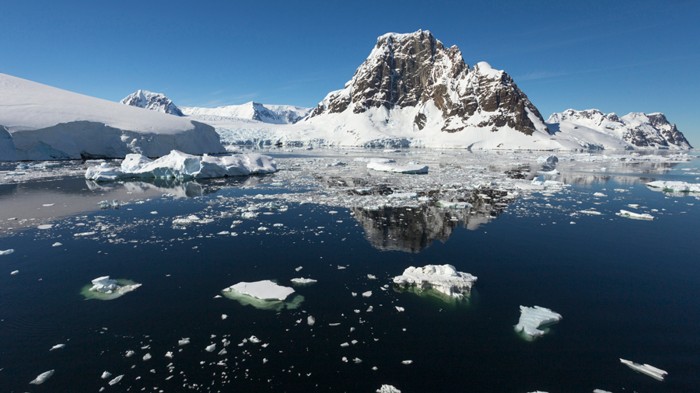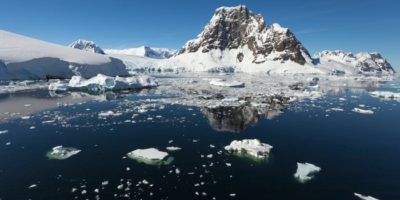Disclaimer: The views, suggestions, and opinions expressed here are the sole responsibility of the experts. No Pacific Daily journalist was involved in the writing and production of this article.
Study reveals new insight into the role of ocean ice in controlling climatic carbon levels

Another study has featured the urgent job that ocean ice over the Southern Ocean played in controlling air carbon dioxide levels during times of past environmental change, and could give a basic asset to creating future environmental change models.
For the investigation a worldwide group of scientists, drove by Keele University and including specialists from the University of Exeter, exhibited that occasional development and annihilation of ocean ice in a warming world improves the measure of marine life present in the ocean around Antarctica, which draws down carbon from the environment and stores it in the profound sea.
Having caught half of all human-related carbon that has entered the sea to date, the Southern Ocean around Antarctica is critical for directing carbon dioxide levels coming about because of human movement, so understanding the procedures that decide its adequacy as a carbon sink through time are vital to decreasing vulnerability in future environmental change models.
To comprehend this procedure further, the specialists examined information identifying with one period where climatic CO2 levels changed quickly.
This happened after the Last Ice Age, around 18,000 years prior, when the world progressed normally into the warm interglacial world they live in today.
During this period, CO2 rose quickly from around 190 sections for every million (ppm) to 280 ppm over around 7,000 years, however one period specifically sticks out; a multi year time frame where CO2 levels leveled at an almost consistent degree of 240 ppm.
The reason for this level, which happened around 14,600 years prior, is obscure, yet understanding what occurred during this period could be vital for improving environmental change projections.
Teacher John Love, from Exeter’s Biosciences office and co-creator of the examination stated: “My research group and I are very excited about being part of this important investigation. We developed new techniques in cell biology to find, collect and analyze the rare and very tiny particles and cells that had been frozen in the ice for millennia.
“Like flies in amber, these minute fragments give us a unique window into past events, enabling our colleagues in the Earth, Atmosphere and Ocean sciences to develop a better understanding of climate change then, and now.”
Lead creator Professor Chris Fogwill, Director of Keele University’s Institute for Sustainable Futures stated: “The cause of this long plateau in global atmospheric CO2 levels may be fundamental to understanding the potential of the Southern Ocean to moderate atmospheric CO2.”
To determine this inquiry, scientists ventured out to the Patriot Hills Blue Ice Area of Antarctica to grow new records of proof of marine life that are caught in ice centers, with help from Antarctic Logistics and Expeditions (ALE).
Blue ice territories are the ideal research center for Antarctic researchers because of their exceptional geology. Made by savage, high-thickness katabatic breezes, the top layer of snow is viably dissolved, uncovering the ice underneath. Subsequently, ice streams up to the surface, giving access to old ice underneath.
Educator Chris Turney, a meeting Fellow at Keele’s Institute for Liberal Arts and Sciences from UNSW Sydney stated: “Rather than penetrating kilometers into the ice, we can basically stroll over a blue ice region and travel back through time.
“This provides the opportunity to sample large amounts of ice for studying past environmental changes in detail. Organic biomarkers and DNA from the Southern Ocean are blown onto Antarctica and preserved in the ice, providing a unique record in a region where we have few scientific observations.”
Utilizing this methodology the group found that there was a checked increment in the number and decent variety of marine life forms present over the multi year time span when the CO2 leveled, a perception which had never been recorded.
This gives the main recorded proof of expanded natural profitability and proposes that forms in the high scope Southern Ocean may have caused the CO2 level. Be that as it may, the driver of this checked change stayed obscure, and the specialists utilized atmosphere demonstrating to all the more likely comprehend the adjustments in the Southern Ocean to comprehend the expected reason.
This displaying uncovered that the level period harmonized with the best occasional changes in ocean ice during an articulated virus stage over the Southern Ocean known as the Antarctic Cold Reversal. During this period, ocean ice developed broadly over the Southern Ocean, yet as the world was warming quickly, every year the ocean ice would be quickly pulverized throughout the mid year.
The specialists will currently utilize these discoveries to support the improvement of future environmental change models. The incorporation of ocean ice forms that control atmosphere carbon criticisms in another age of models will be pivotal for decreasing vulnerabilities encompassing atmosphere projections and will assist society with adjusting to future warming.
Mario Ferrari is a prolific writer, He is a seasoned writer. He has written many short-stories and poem for newspapers and magazines. He has a passion for creating new websites for online marketing. He has bachelor’s degree in M.C.A from New York. Mario Ferrari has won multiple awards for his excellent writing.
Related News

THE KETO DIET MEAL PLAN HAS MET ITS MATCH
Spread the loveWeight loss is made to seem easy since all it requires is exerciseRead More

Study reveals new insight into the role of ocean ice in controlling climatic carbon levels
Spread the loveAnother study has featured the urgent job that ocean ice over the SouthernRead More